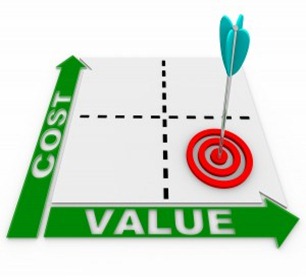Contents:


However, you can avoid this and make your DSO better by offering discounts to customers who pay early. In general, offering rewards for early-paying clients has been a well-known tactic that companies adopt to accelerate their payment procedures because early-bird discounts and perks have always attracted customers. On the contrary, the firm could also consider setting hefty penalties for clients who have been constantly late with settling their outstanding debts. Therefore, it is vital for businesses to make sure that their invoices contain explicit terms and conditions regarding the consequences of any late payments. DSO looks at the relationship between a company's average accounts receivable and its sales made on credit during a certain time period. Internal issues, such as a slow or inefficient invoice process, could be the culprit, too — many such issues arise when AR is handled manually, rather than automatically.
High Days Sales Outstanding ➝ But a higher value indicates the company is unable to quickly convert credit sales into cash, and the longer that the receivables remain outstanding, the less liquidity the company has. Needless to say, a small business can use its days sales outstanding number to identify and flag customers that are weighing it down by not paying promptly. In effect, determining the average length of time that a company’s outstanding balances are carried in receivables can reveal a great deal about the nature of the company’s cash flow. Days sales outstanding is the average number of days it takes a company to receive payment for a sale. DSO is a critical business metric because it determines the financial situation and growth. Suppose a business takes longer than 45 days; it has to streamline its collections process to convert orders to cash in fewer days.
The days sales outstanding figure is an index of the relationship between outstanding receivables and credit account sales achieved over a given period. If your company has a higher days sales outstanding , it is an indication that your accounts receivable process is poor or underperforming. From this report, you can motivate your payment collection team with various incentives and benefits, to improve their performance and get all outstanding payments within the expected timeframe. After you complete the calculation, match the figures against the competition in the industry. As far as the final figures go, calculating the Daily Outstanding Sales can tell you a couple of things about the state of your business.
Perhaps payment terms aren't clear, or invoices aren't going out in a timely manner. They may also contain errors — in amounts or other details, such as missing customer purchase order information — that delay payments. Better follow-up and more frequent reminders about unpaid invoices may be necessary. The latter is particularly useful to companies that offer subscriptions or monthly memberships.
Higher days sales outstanding can also be an indication of inadequate analysis of applicants for open account credit terms. An increase in DSO can result in cash flow problems, and may result in a decision to increase the creditor company's bad debt reserve. When your sales team report sales growth, but doesn’t tell well about your company’s financial health. This could be a sign that your sales team is not doing well in collecting payments of goods sold on credit. This could also signify that your salespeople are granting longer payment terms to customers that are not creditworthy. From your DSO, you will understand how this is affecting your financial health and find a lasting solution to the problem.
How is the Days Sales Outstanding Value Calculated?
While DSO and DPO are both important metrics for measuring a company's cash flow, they represent different sides of the cash flow equation. A company's DSO and DPO can be compared to gain insights into their cash conversion cycle, which is the amount of time it takes for a company to turn its inventory into cash. It’s worth remembering that this DSO calculation method doesn’t account for cash sales, where zero-days are outstanding on a sale or service. If these were taken into account, the total DSO would be considerably less.
You count back every month until you find your gross sales are higher than your A/R. Your DSO is the amount of time you’ve added together by counting back. If you want to calculate your DSO over a year, using the simple method will not take into account any seasonality in your business. So if your business is closed in August or doesn’t do much turnover in December, your DSO calculation will not be accurate. Want to learn more about how accounts receivable automation from Billtrust can help lower your company’s DSO?
Offer discounts for early payments
If https://1investing.in/ don't pay on time, DSO will rise and the business may run short of cash. One of the most important metrics you can track in accounts receivable, Days Sales Outstanding measures the number of days, on average, that it takes your company to collect customer payment after a sale is made. Let’s take a closer look at how to calculate DSO, why it’s important, and how it can be used to shorten your cash collection cycle (or put another way, speed up cashflow!). To sum everything up, if you’ve made a sale, but you haven’t collected the payment on time, it’s counted as a loss for your business. With DSO, you can measure the efficiency of your collection process and come up with practices to get paid quicker.
Finally, the End of the Car Dealership? - The American Prospect
Finally, the End of the Car Dealership?.
Posted: Wed, 07 Dec 2022 08:00:00 GMT [source]
A budgeting reporty or concerning DSO ratio would largely depend on the nature of the business and the industry verticals in which the firm is operating. Having mentioned that, different businesses may have varying definitions of what “quickly” would mean. For instance, having an extended credit period is considered to be fairly common in the world of finance.
Days Sales Outstanding
In this article, we will help you understand the concept of DSO, how to calculate days sales outstanding, and other important things to know about maintaining a good DSO for your business. No matter how this measurement is used, remember that it is usually compiled from a large number of outstanding invoices, and so provides no insights into the collectability of a specific invoice. Thus, it should be supplemented with an ongoing examination of the aged accounts receivable report and the collection notes of the collection staff. If you look at the number each month, it will give you a good idea in real-time if your payments are lagging behind and if your receivable process is working.
Usually completed on a monthly or quarterly basis , DSO calculations can be highly beneficial once you understand the process for completing them. The period of time used to measure DSO can be monthly, quarterly, or annually. If the result is a low DSO, it means that the business takes a few days to collect its receivables.
To calculate the traditional DSO for both companies, divide $7,000,000 by the average daily sales for the last 12 months of $100,000. Another flaw is that if there is no clarity about the proportion of credit sales, the entire sales are considered the net credit sales. Such proxy frequently results in an understated value that is not correct. The calculation is based on receivables at the start and at the end of the year. As such, for businesses characterized by peak season in the middle of the year, the metric may fail to depict the true picture as the calculation uses values that are as on the balance sheet date. Similarly to decisions about payment terms, you can also make decisions about the credit requirements of your clients.
- For investors, the DSO can give you an overall picture of how efficient a business is in terms of collecting money from its customers.
- We recommend aiming for a high A/R turnover ratio as it indicates process efficiency.
- It is important to remember that the formula for calculating DSO only accounts for credit sales.
- As a business owner, you can also view DSO as the number of days it takes for credit sales to be converted to cash, or the number of days that receivables remain outstanding until they’re collected.
- DSO is also not a perfect indicator of a company’s accounts receivable efficiency as fluctuating sales volumes can affect DSO, with an increase in sales lowering the DSO value.
Download theA/R Checklist to see how simple changes in your A/R process can free up a significant amount of cash. What's New The latest product innovations and business insights from QuickBooks. Funding How to find funding and capital for your new or growing business. Accounting Accounting and bookkeeping basics you need to run and grow your business.
Industries like finance have longer payment periods than the agricultural sector, for example, and will affect different types of businesses in a variety of ways. Your small business’s average DSO shows how long it takes you to collect payment for credit card sales over time. Cash sales aren’t worked into the DSO calculation since you get paid for those upfront.
When measured at the individual customer level, it can indicate when a customer is having cash flow troubles, since the customer will attempt to stretch out the amount of time before it pays invoices. The measurement can be used internally to monitor the approximate amount of cash invested in receivables. Days sales outstanding is a financial ratio that tells you the amount of time it takes your business to get paid for a sale, on average. A low DSO number generally means that it takes the company less time to collect payments.
However, secured debt settlements are critical for the energy and agriculture sectors. Other than that, smaller firms are typically more dependent on having a stable and positive cash flow compared to large multinational corporations, which may have a diverse range of revenue streams. Technically speaking, firms could expect with some degree of confidence that they would be paid for their outstanding accounts receivables. However, due to the time value of money concept, any time spent waiting for the debt to be settled would be equal to money lost. For the same quarter, another bike retailer, Company B, had an average AR of $12.4 million and total credit sales of $15.7 million. Company B's sales might seem more impressive than Company A's, but its DSO is much higher, at 71.1 days [($12.4 million ÷ $15.7 million) x 90 days].
Declining Demand Drives Price Pullback - Zillow Research
Declining Demand Drives Price Pullback.
Posted: Wed, 12 Oct 2022 07:00:00 GMT [source]
Instead, use the calculation with other accounting metrics like turnover ratio to give you a fuller picture of how your company is performing. Similarly, the company is encouraging customers to purchase with credit with the hope that this will generate the sale of more products and services. It is important to first note that the DSO calculation only considers credit sales; it does not account for cash transactions. Not offering credit sales may lead to low sales and eventually affect a business’s revenue flow. For small businesses, higher DSO results in a higher risk of cash flow problems. This could affect the ability to handlecurrent liabilitiessuch as salaries, utilities, and other operational expenses.

This can further exacerbate cash flow problems and make it even more challenging for a business to maintain optimum levels of liquidity. You can use this DSO formula to calculate your DSO for any period of time by adjusting the number of days used in the formula. The Days Sales Outstanding is also used to measure the liquidity of a company/ business.
Put another way, Company B takes more than twice as long to collect cash from its sales than Company A. This days sales outstanding formula is more complex but more accurate too. That’s why most CFOs and finance professionals use this method to calculate their company’s DSO and that’s why you should use it too.

A business that takes longer than 45 days to convert orders to cash needs to streamline their collections process to reduce their DSO and increase business’s revenue. Credit checks and payment terms - DSO is often driven by your customers' ability to pay invoices on time. Therefore, any effort to improve DSO must address customer credit risk and define payment terms based on that creditworthiness.




















